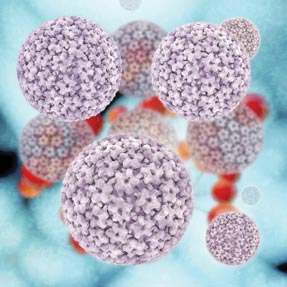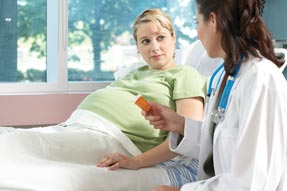HPV vaccine efficacy increases, but use lags
Human papillomavirus immunization rates continue, for several reasons, to lag behind those of other vaccines. Experts are formulating new approaches for physicians and patients to ensure that HPV protection is as robust as possible.
Even with a third vaccine for the human papillomavirus (HPV) approved, data show that HPV immunization rates continue, for several reasons, to lag behind those of other vaccines. Given this discrepancy, experts are formulating new approaches for physicians and patients alike to ensure that HPV protection is as robust as possible.
HPV is the most common sexually transmitted disease (STD) and affects approximately 20 million Americans, with about 6 million new cases each year, according to a Centers for Disease Control and Prevention Vaccine Information Statement. HPV is associated with cervical, vulvar, and vaginal cancer in women; penile cancer in men; and anal and oropharyngeal cancers in both sexes. (Along with cancer prevention, the vaccine protects against genital warts and precancerous cervical, vulvar, vaginal, and anal lesions.)

In December 2014, the FDA approved the HPV 9-valent vaccine, which is manufactured by Merck and Co. under the brand name Gardasil 9 and protects against HPV 31, 33, 45, 52, and 58, as well as HPV 6, 11, 16, and 18. The latter 4 types of HPV are also covered by the quadrivalent vaccine, which is manufactured by Merck under the brand name Gardasil. The bivalent vaccine, manufactured by GlaxoSmithKline under the brand name Cervarix, protects against HPV 16 and 18.
An international study supported by Merck and published Feb. 19, 2015, in the New England Journal of Medicine found that, among more than 14,000 HPV-negative females ages 16 to 26, the 9-valent vaccine was 97% effective in preventing cervical, vulvar, and vaginal cancers caused by HPV 31, 33, 45, 52, and 58. It was also found to be just as effective as the quadrivalent vaccine in preventing HPV types 6, 11, 16, and 18.
Pregnant women and those who have had allergic reactions to yeast, polysorbate 80, and amorphous aluminum hydroxyphosphate sulfate should not receive the 9-valent vaccine. Overall, however, studies have shown that the vaccine is well tolerated, and most adverse events are considered mild and related to injection-site pain and swelling.
At current vaccine costs, models have found that 9-valent vaccination is likely cost-saving compared to quadrivalent vaccination. This held true mainly for female patients and mainly as a result of the additional disease coverage the 9-valent vaccine provides, according to the CDC's March 27, 2015, Morbidity and Mortality Weekly Report. “Efficacy was very high,” said Lauri E. Markowitz, MD, a medical epidemiologist and team leader of epidemiology research with the CDC's division of STD prevention, who coauthored the CDC recommendations.
Clinical considerations
The CDC's Advisory Committee on Immunization Practices (ACIP) recommends that the 9-valent vaccine, like its predecessors, be administered in a 3-dose series over about 6 months. (In general, ACIP recommends any of the 3 vaccine brands for females and the 9-valent or quadrivalent vaccine for males, according to the Morbidity and Mortality Weekly Report.) Routine vaccination is recommended for girls and boys at age 11 or 12 years. The vaccine is also recommended for girls or women not previously vaccinated at the routine age through age 26 and for boys and men through age 21. As with previous HPV vaccines, the 9-valent vaccine is covered by the large majority of insurance plans, said Dr. Markowitz and Peter G. Gulick, DO, FACP, an associate professor in hematology/oncology and infectious disease at Michigan State University College of Osteopathic Medicine in East Lansing, Mich. If vaccine doses are delayed, the series does not need to be restarted.
“There's no reason not to complete that series,” said Rachel Caskey, MD, FACP, associate professor of medicine and pediatrics at the University of Illinois College of Medicine in Chicago. “Never restart a multidose vaccine series; just keep vaccinating.”
Generally speaking, Dr. Caskey said, patients who have already started the HPV vaccine series with the bivalent or quadrivalent vaccines can continue their series with the 9-valent vaccine taking the place of the older versions. Currently, there is no recommendation for a booster dose of the 9-valent vaccine for patients who have completed the 3-dose series with either the quadrivalent or bivalent vaccine.
The 3-dose recommendation may change in the future, however. A study published in the July 2015 Lancet Oncology concluded that 1- and 2-dose HPV vaccination schedules with all generations of the vaccines offer similar protection as 3 doses.
“It doesn't seem that we need 3 doses,” said Cosette Wheeler, PhD, a study coauthor and regent's professor of pathology and obstetrics and gynecology at the University of New Mexico School of Medicine in Albuquerque. “We may not get away with 1 dose ... but we still have a lot to figure out.”
Research is under way to assess alternative dosing schedules, and ACIP officials have indicated they will review new data as they become available. In the meantime, Dr. Wheeler suggested that the 9-valent vaccine should be compared with the other 2 versions of the vaccine in a head-to-head trial and with different dosage schedules.
Uptake remains low
Despite the proven efficacy of all 3 vaccines, HPV immunization rates in the U.S. continue to be well below those of other vaccines such as meningococcal vaccine and the tetanus, diphtheria, acellular, and pertussis (Tdap) vaccine.
According to data from the CDC's most recent National Immunization Survey for teens, coverage with at least 1 dose of HPV vaccine among girls ages 13 to 17 increased by 3.3 percentage points between 2013 and 2014, rising from 56.7% in 2013 to 60% in 2014. For boys in the same age group, coverage rose 8.1 percentage points, from 33.6% in 2013 to 41.7% in 2014.
The increases may be encouraging, but the rates still pale in comparison with those of Tdap, which had a total coverage rate of 87.6% in 2014, and meningococcal conjugate, which had 79.3% coverage that year, according to the National Immunization Survey for teens.
Experts have offered multiple reasons for the low uptake. One explanation may lie in the confusion that can arise among clinicians, particularly given that the vaccination time window overlaps pediatric and adult care. The sexual component of the disease can add additional uncertainty.
“It is not always clear as to who should recommend the HPV vaccine to female patient, the gynecologist or the primary care physician,” said Shailaja Nair, MD, FACP, clinical director of the Drexel Center for Women's Health in Philadelphia. “Young patients may not go to the gynecologist every year and so they miss a window of opportunity if the primary care physician does not recommend the vaccine.”
Still, HPV's status as an STD is probably the top reason the vaccine remains a tough sell, experts said.
“A lot of people get offended when it gets brought up and say they don't need it,” said Dr. Gulick. “You hear a lot of comments like ‘I'm not one of those people who's going to have sex early.’”
This perceived stigma has a larger systemic effect. Only Virginia, Rhode Island, and the District of Columbia require HPV vaccinations for public school students.
“It's not a school-mandated vaccine,” Dr. Caskey said. “If you look at the uptake versus others that are mandated, you see striking differences.”
School vaccination requirements are typically determined by (or subject to the approval of) state legislatures. According to information from the National Conference of State Legislatures, more states and school districts are discussing an HPV vaccination requirement in schools, but progress remains slow.
As of September 2015, Rhode Island seventh graders are required to receive the HPV vaccine. (Some parents and students protested the new measure, although the state has not altered its requirement.) Virginia and the District of Columbia require HPV immunization, but only for female students. Dozens of other states have considered the same or similar measures, but no other new requirements have yet to become law, according to the National Conference on State Legislatures.
Broaching the subject
Sometimes, experts said, physicians may unwittingly place too much emphasis on the mode of transmission (intimate contact) of HPV. Though undoubtedly an important conversation, in the context of HPV vaccination, discussions of sexual behavior run the risk of shifting a patient's or family's focus toward the cause of HPV spread, rather than the benefits of the vaccine.
“Often, clinicians offer a lot of information to families about the vaccine. It's well-intentioned but confusing as it sets the HPV vaccine apart from all other universally recommended vaccines,” Dr. Caskey said. “Most vaccinators don't discuss the merits of Tdap or pneumococcal vaccines with families; why should we approach the HPV vaccine differently?”
To make things clearer for the patient and avoid making sex an unnecessary distraction during a discussion of HPV vaccination, experts advised keeping conversations as simple as possible.
“Less is more,” Dr. Caskey said. “Give 1 simple message: ‘I recommend you receive the Tdap, meningococcal, and HPV vaccine today,’ period.” She suggested not focusing on the mode of transmission and not launching into details unless specific questions are initiated by the patient or family.
To reduce the likelihood of one or more doses being missed as young adults switch from pediatricians to internists or divide their care between primary care and gynecologist offices, practices can more systematically incorporate HPV immunizations into their record-keeping systems (including the electronic medical record) and review those records with patients who are within the vaccination time window, Dr. Nair said.
“We assume that by the time they get to an internist, most patients would have already completed their HPV immunization series,” Dr. Nair said. “Some may not have, and so it is important to address this while reviewing their immunization record as part of their annual physical examination.”
Ultimately, experts said, focusing squarely on the prevention aspect of the HPV vaccine can pay immediate dividends.
“HPV-related squamous-cell cancers in both men and women are very difficult to treat and very few can be cured or even get into remission,” Dr. Gulick said. “In the field of oncology, whenever there is a way to prevent a cancer from developing, it is definitely worth doing.”




